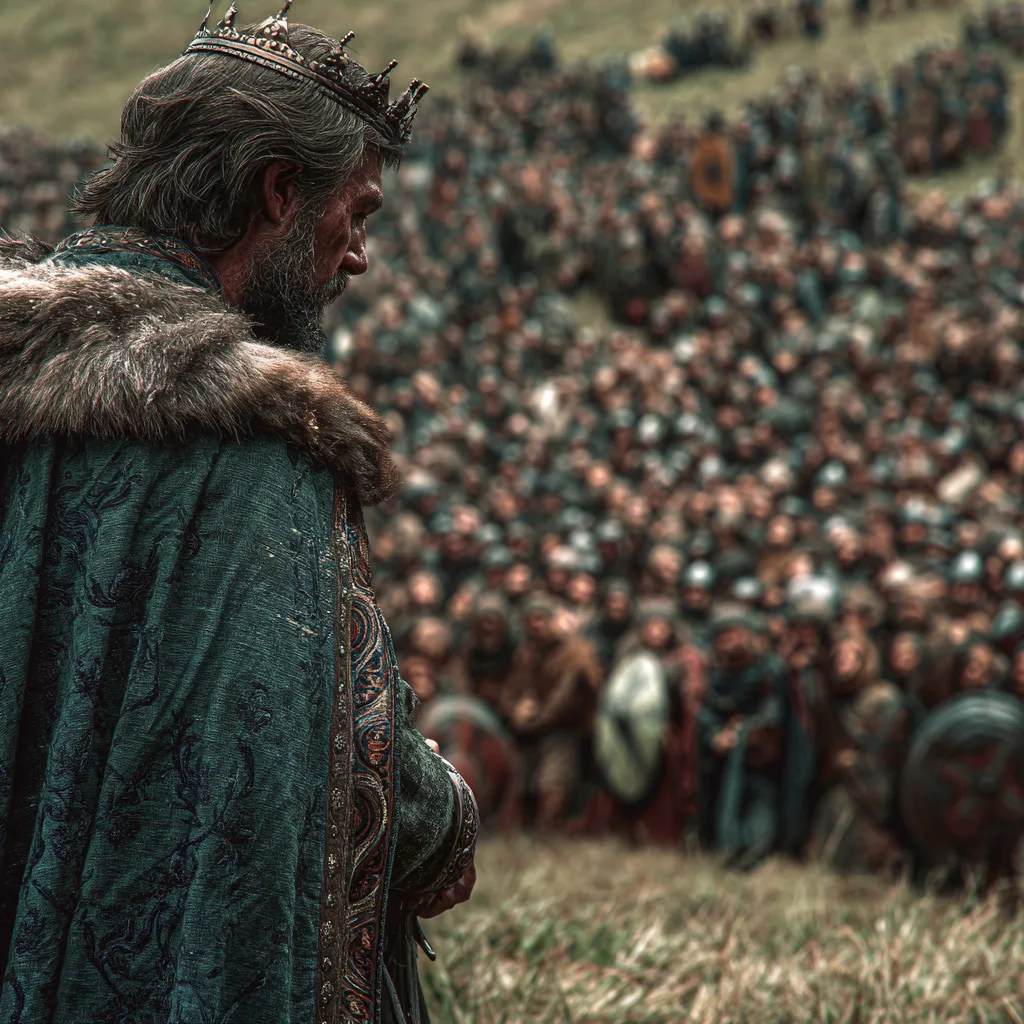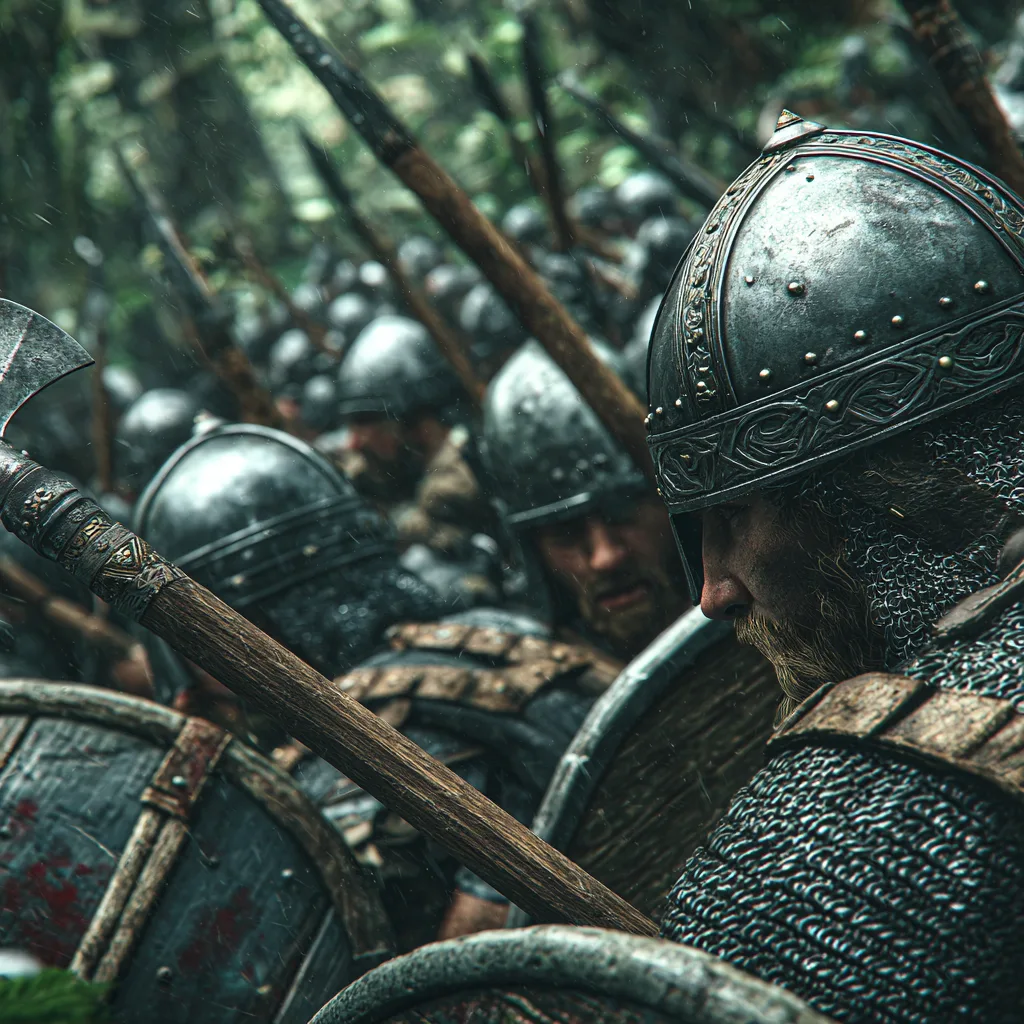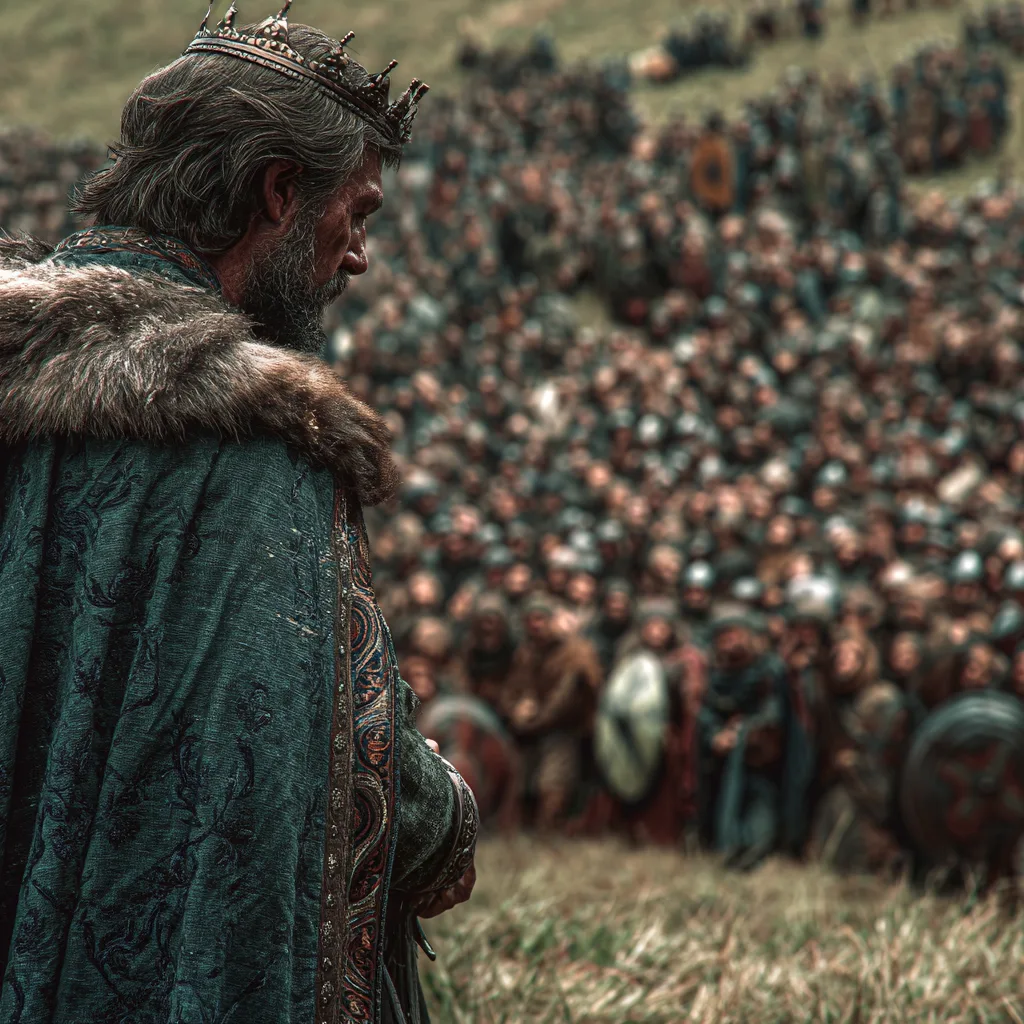
Edward the Elder’s life reads like a saga of ambition, warfare, and family intrigue – yet for centuries, he remained a shadowy figure, eclipsed by his legendary father, Alfred the Great, and his more celebrated son, Athelstan. But peel back the layers of history, and you’ll find a king whose relentless drive and strategic genius shaped the very idea of England.
“Incomparably more glorious in the power of his rule,” wrote William of Malmesbury, “though much inferior to his father in the cultivation of letters.”
A Prince in the Shadow of Greatness
Born in the mid-870s, Edward was the eldest son of Alfred the Great and Ealhswith, a princess of Mercia. His childhood was marked by turmoil: Viking armies ravaged the land, and the future of the Anglo-Saxon kingdoms hung by a thread. Alfred’s victory over the Danish Vikings at Edington in 878 saved Wessex, but the threat was never far away.
Edward’s path to the throne was anything but certain. Succession in Anglo-Saxon England was a brutal contest, with adult male relatives – athelingas – vying for the crown. Alfred, ever the strategist, sent young Edward to Rome, where he was ceremonially armed as a consul – a move designed to bolster his claim and prestige.
A Bloody Succession
When Alfred died in 899, Edward inherited not only a kingdom but a crisis. His cousin Æthelwold, son of Alfred’s elder brother, claimed the throne, seizing royal manors and even abducting a nun in a bid for support. When Edward moved against his cousin, Æthelwold fled to the Danes of Northumbria, who crowned him King of York. The stage was set for civil war.

In 902, Æthelwold returned with a Danish army, launching a devastating raid into Wessex and Mercia. Edward responded with equal ferocity, ravaging East Anglia in the Danelaw.
The final act came at the Battle of the Holme on 13 December 902. As Edward withdrew his forces, the men of Kent, part of his army, lingered and were caught by Æthelwold’s Viking allies. The ensuing battle was bloody and costly. The Danes claimed victory, but it was pyrrhic: Æthelwold himself was slain, along with Eohric, king of East Anglia, and several other leaders. The Kentish contingent also suffered heavy losses, including two ealdormen and an abbot. This battle ended the immediate threat to Edward’s rule – but not the Viking menace.
A Fragile Peace and Renewed Hostilities
After the initial bloodshed, a tense peace followed. In 906, Edward was compelled to negotiate with the Danes of East Anglia and Northumbria, likely buying time to strengthen his position. This lull was deceptive. By 909, Edward, in alliance with Mercia, launched a punitive expedition into Northumbria, seizing the relics of St. Oswald and forcing the Danes to accept peace on his terms. The following year, the Northumbrian Danes retaliated by raiding Mercia, only to be decisively defeated at the Battle of Tettenhall in 910 – a turning point that crippled Viking ambitions south of the Humber for a generation.
The Burh-Building Strategy
Edward’s genius lay not just in battle but in fortification. After 911, following the death of Mercian leader Æthelred, Edward assumed control of key border towns and, in tandem with his formidable sister Æthelflæd, Lady of the Mercians, began a systematic campaign of building burhs – fortified settlements – across threatened territories. These strongholds, such as those at Hertford, Witham, and Buckingham, acted as both defensive bulwarks and springboards for further advances, steadily eroding Danish influence and encouraging English settlers in the Danelaw to submit to Edward’s rule.
Viking Raids and English Resilience
The period was punctuated by episodic Viking raids, including a notable incursion from Brittany in 914. Edward responded with characteristic resolve, ransoming a captured Welsh bishop and keeping a vigilant army in the field to repel further attacks. His forces successfully defended against Viking assaults in Hereford and the Severn estuary, demonstrating the growing reach and cohesion of West Saxon power.

The Decisive Year: 917
The campaign reached its climax in 917. Edward’s forces constructed new forts at Towcester and Wigingamere, blocking Danish advances from Northampton. The Danes responded with a series of coordinated attacks on Towcester, Bedford, and other burhs, but were repulsed at every turn, their lack of unity proving fatal. Meanwhile, the Mercian queen Æthelflæd captured Derby, further tightening the Anglo-Saxon grip on the Midlands.
Certainly Edward didn’t fight alone. His sister, Æthelflæd – known as the “Lady of the Mercians” – was his most formidable ally. Married to the ruler of Mercia, she took command after her husband’s death, effectively building a network of fortresses and leading armies into battle. Together, Edward and Æthelflæd orchestrated a relentless campaign against the Danes.
Edward shifted to the offensive. His army stormed the Danish fortress at Tempsford, killing the last Danish king of East Anglia and two earls in a decisive blow. Colchester fell soon after, and although the Danes attempted a desperate siege of Maldon, they were defeated and forced to retreat. Edward reinforced Towcester, and the Danes of Northampton, Cambridge, and East Anglia submitted to his overlordship by year’s end, leaving only a handful of strongholds in the Five Boroughs still resisting.
The Master Strategist
Edward was more than a warlord; he was a master of realpolitik.
The key event came in 921. According to the Anglo-Saxon Chronicle, Edward summoned the kings of the Scots and Welsh Strathclyde, along with Danish, Norse and English leaders from Northumbria, to Bakewell, on the border between Mercia and Northumbria. There, they “chose him as father and lord,” a phrase that, in the language of the time, denoted submission and the acceptance of Edward’s overlordship. The submission reflected the reality of Edward’s military strength and the political advantage for the northern kings to align with the dominant Anglo-Saxon ruler.
By the end of his reign, Edward ruled all of England south of the Humber, and even the Viking kingdom of York acknowledged his supremacy.
His military genius was matched by his administrative reforms. Edward completed the New Minster at Winchester, establishing it as a royal mausoleum and a symbol of his dynasty’s legitimacy. He built and garrisoned fortresses, secured the loyalty of local lords, and laid the foundations for a unified English state.

Family, Intrigue, and Legacy
Edward’s personal life was as complicated as his politics. He was married at least twice, and possibly had a son, Athelstan, by a mistress. His children would go on to rule England – most notably Athelstan, who completed his father’s work and became the first king of a truly united England.
But Edward’s reign was not without controversy. His imposition of direct rule over Mercia after Æthelflæd’s death angered some, and he faced revolts from both Mercian and Welsh factions in his final year. In 924, after putting down a Mercian rebellion at Chester, Edward died suddenly at Farndon in Cheshire. He was buried in the New Minster, Winchester – a fitting resting place for a king who had spent his life building and defending the realm.
The Forgotten Founder
For centuries, Edward the Elder was overshadowed by his father and son. Medieval chroniclers admired his martial prowess but lamented his lack of scholarly interests. Modern historians largely ignored him until the late 20th century, when a new appreciation of his achievements emerged.
Today, Edward is recognized as the king who destroyed the Viking power in southern England and laid the groundwork for a united English kingdom. Without his military victories, administrative reforms, and political acumen, the England we know might never have come into being.
His story is a reminder that history’s greatest nation-builders are not always the ones who seek the spotlight. Sometimes, they are the “Elders” – the steady hands who turn chaos into order, and dreams into reality.





